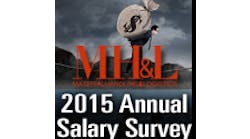Pallets, crates and other wood packaging that has not been heat treated or fumigated cannot enter the U.S. The Animal and Plant Health Inspection Service of the U.S. Department of Agriculture and Customs and Border Protection (CBP) began enforcing Phase II of a wood packaging regulation that calls for shipments containing unapproved packaging be reexported.
On February 1, 2006, U.S. Customs and Border Protection (CBP) began enforcing Phase II of a ban on importation of wood packaging materials. The ban, contained in rules issued by the U.S. Department of Agriculture’s Animal and Plant Health Inspection Service (7 CFR 319.40) requires regulated wood packaging material to be treated in the country of export and marked with the symbol for that country’s National Plant Protection Organization.
Phase I of the ban called for visual examinations and informed compliance. No shipments were stopped for non-compliance.
Phase II, which went into effect February 1, 2006, continues informed compliance generally, but enforces the ban specifically on pallets and crates. Upon inspection by CBP, shipments that do not comply with the ban will be re-exported. The rules allow for shipments which can be separated from non-compliant packaging to be separated and accepted. Cost for those steps will be billed to the importer or other “party of interest.”
Under reciprocal agreements between the U.S. and Canada, shipments of Canadian-origin goods are excluded. Wood packaging on those shipments will be considered also to be of Canadian origin.
Wood packaging must be heat-treated or fumigated using methyl bromide and must carry the approved National Plant Protection Organization (NPPO) logo from the country of export. Unmarked packaging will be assumed to be untreated.
Phase III of the ban, which takes effect in July 5, 2006, calls for full enforcement of the ban on all regulated wood packaging materials.
Source: Logistics Today.

